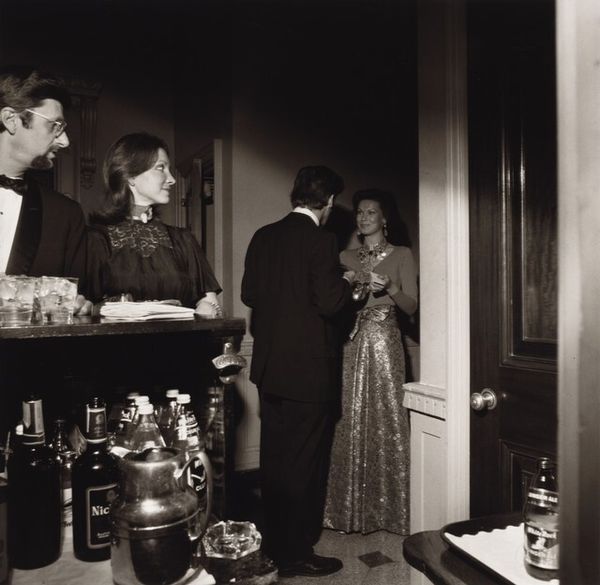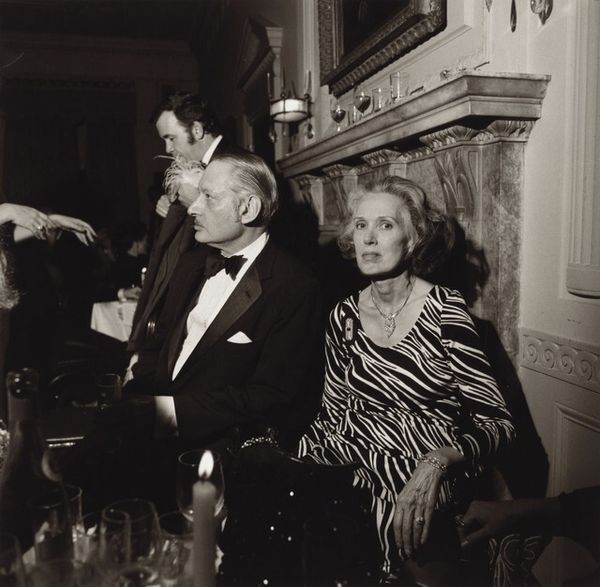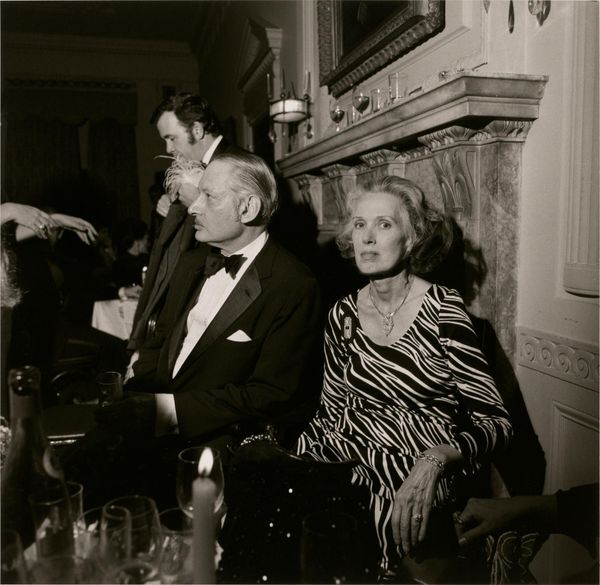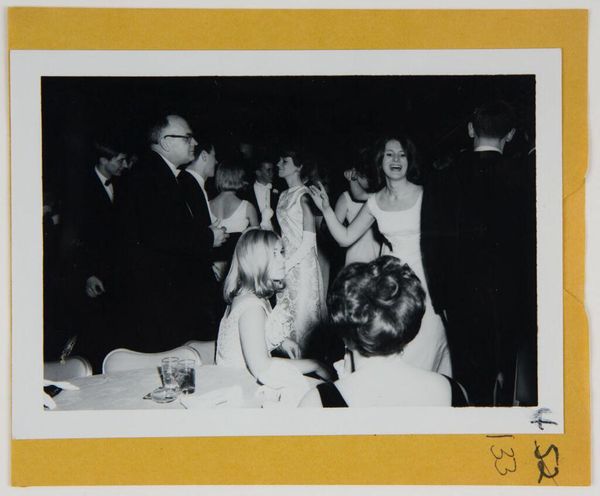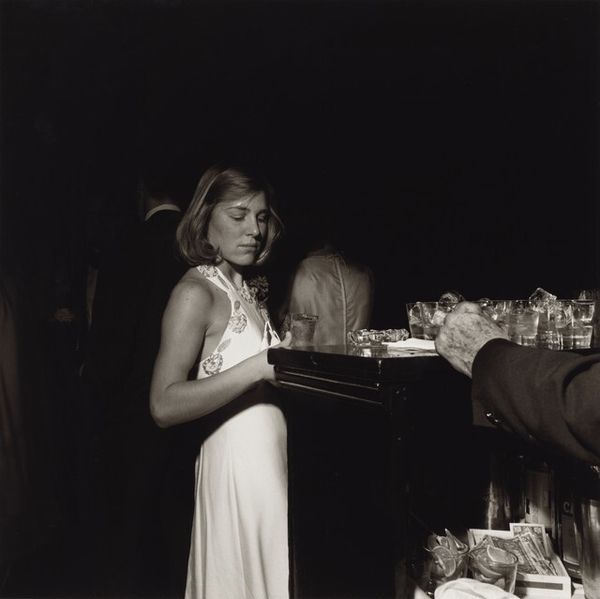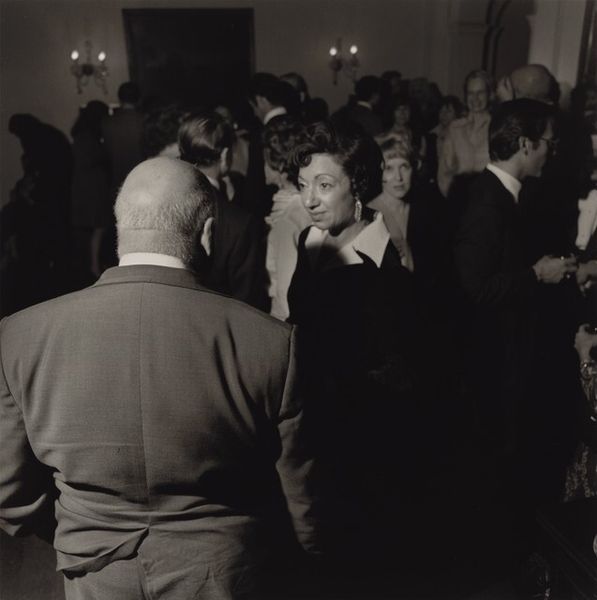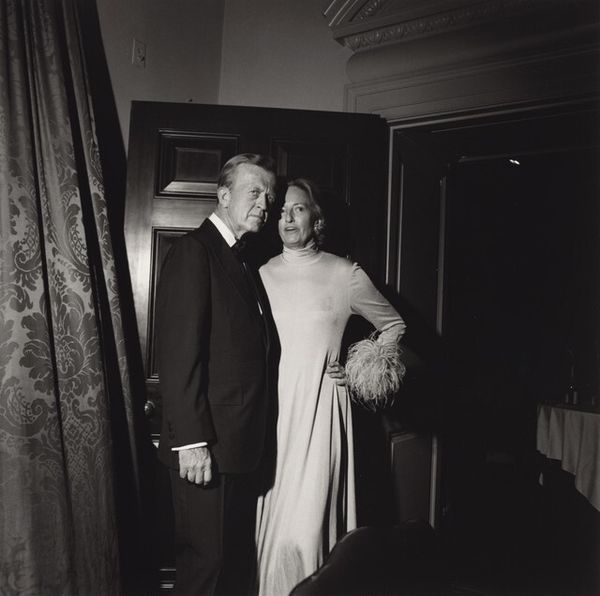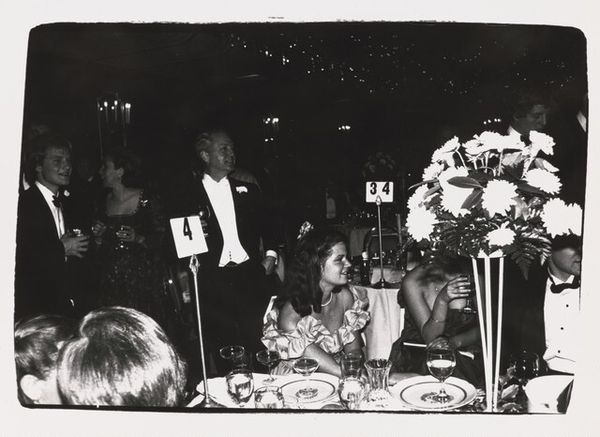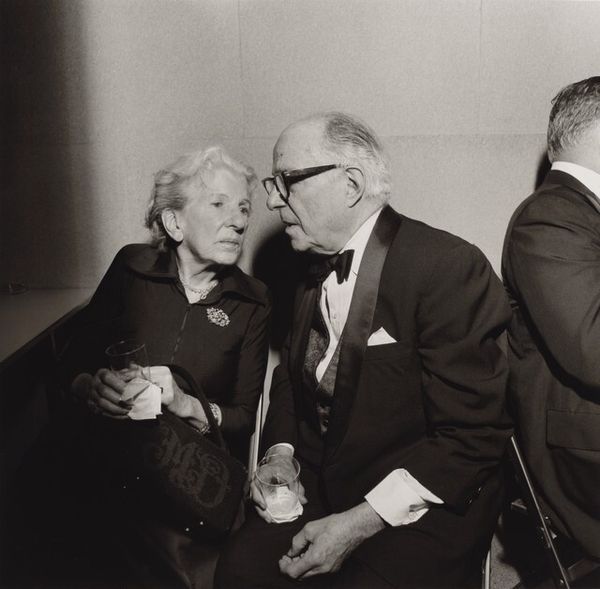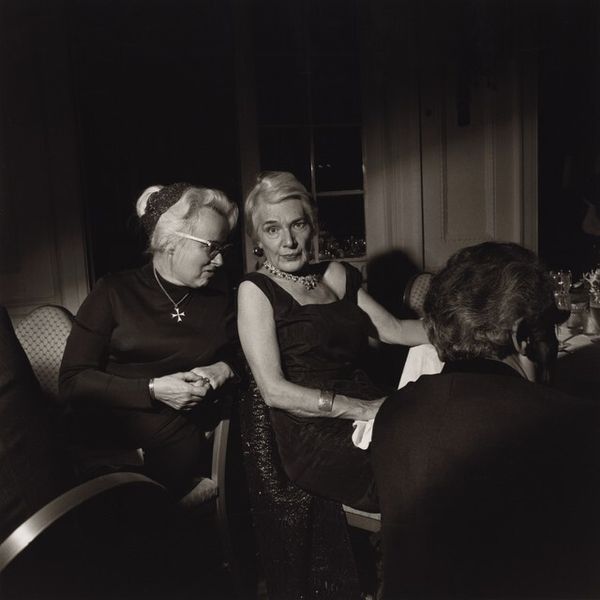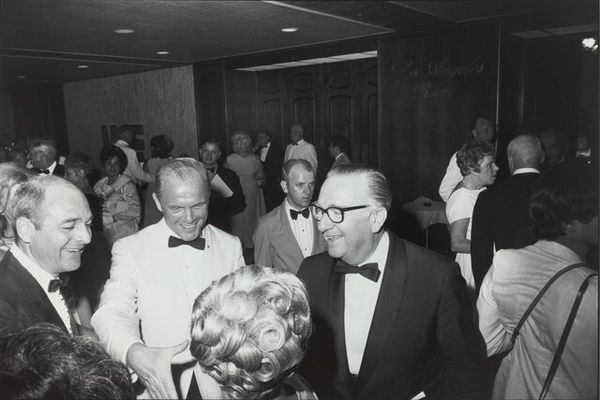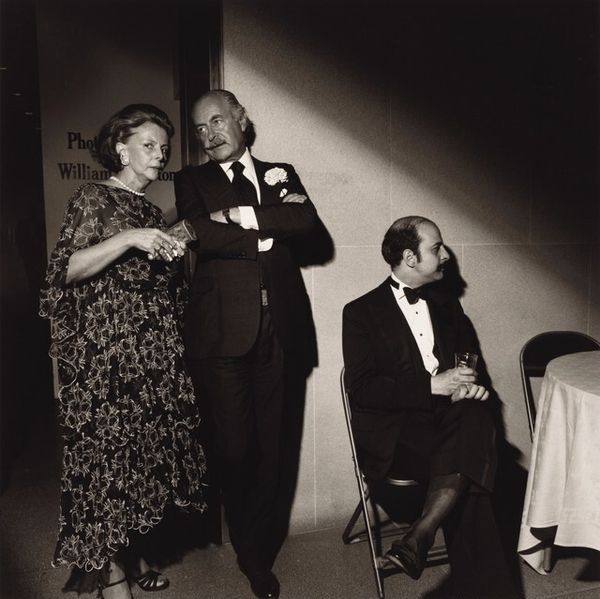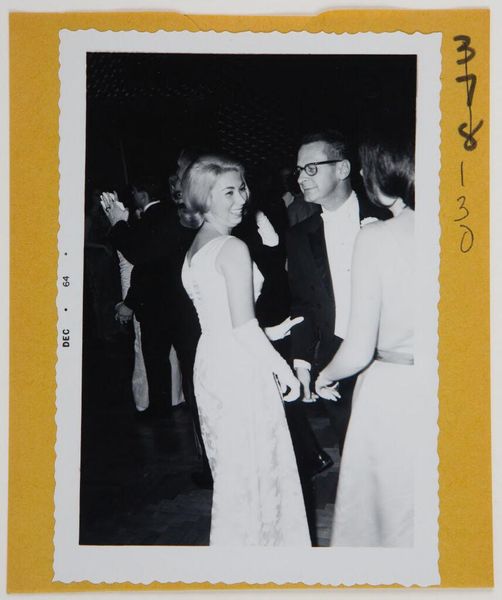
photography
#
portrait
#
wedding photograph
#
black and white photography
#
wedding photography
#
black and white format
#
archive photography
#
photography
#
historical photography
#
black and white theme
#
black and white
#
monochrome photography
#
celebration photography
#
realism
Dimensions: image: 36.3 × 36.3 cm (14 5/16 × 14 5/16 in.) sheet: 50.5 × 40.5 cm (19 7/8 × 15 15/16 in.)
Copyright: National Gallery of Art: CC0 1.0
Curator: Larry Fink's photograph, "Russian Ball, New York City," taken in 1976, presents a slice of high society rendered in stark black and white. What's your initial reaction? Editor: It feels like peering through a keyhole. There's an intimacy, but also a distance, created by that grainy monochrome. The faces, caught mid-conversation, seem both familiar and utterly unknowable. Like a dream you almost recall. Curator: Fink was known for his social documentary photography. He often juxtaposed different social classes, capturing moments of both mundane and heightened experience. He challenged traditional notions of photographic beauty by employing harsh flash and unconventional compositions. Editor: Yes, that flash! It feels almost confrontational. Blasting away any pretense of polished elegance. I love how it reveals the slightly anxious expressions, the weight of expectations perhaps. The raw emotion bubbling beneath the surface of polite society. It's punk rock, but at a debutante ball. Curator: There's a certain tension in the image, isn't there? The subjects appear to be unaware or unbothered by the photographer's presence, contributing to the overall realism of the photograph. Editor: Precisely! It isn't posed, it is more a stolen moment. Also, notice how the painting in the background sort of mirrors the scene itself—a vague landscape behind these figures in their own, very different landscape of privilege. Do you think there's intentional symbolism there? Curator: Fink had a keen awareness of class dynamics. The title "Russian Ball" hints at a very specific cultural context, one marked by both glamour and perhaps a sense of displacement for those within this social circle. Photography from this period frequently captured social divisions and identity. Editor: Displacement indeed, but is that a kind of societal tension captured in monochrome? You know what? I feel a strange empathy for these figures, even though they exist in a world so different from my own. Curator: That’s what I find so compelling about Fink's work. It transcends mere documentation and becomes a study of human nature. Editor: Absolutely. Looking at it more, it also becomes a funereal dance of the absurd, capturing these people suspended between different realities and worlds of perception, if you will. Thanks, I hadn’t noticed this before. Curator: Well, perhaps on your next viewing, you might discover even more within this image to contemplate. Editor: Possibly, but regardless of any discoveries, this is more than an observation—it’s an immersive plunge.
Comments
No comments
Be the first to comment and join the conversation on the ultimate creative platform.

